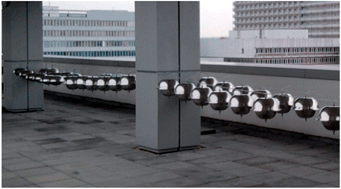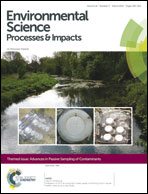Outdoor passive air monitoring of semi volatile organic compounds (SVOCs): a critical evaluation of performance and limitations of polyurethane foam (PUF) disks†
Abstract
The most commonly used passive air sampler (PAS) (i.e. polyurethane foam (PUF) disk) is cheap, versatile, and capable of accumulating compounds present both in gas and particle phases. Its performance for particle associated compounds is however disputable. In this study, twelve sets of triplicate PUF-PAS were deployed outdoors for exposure periods of 1–12 weeks together with continuously operated active samplers, to characterize sampling efficiency and derive sampling rates (RS) for compounds belonging to 7 SVOC classes (including particle associated compounds). PUF-PAS efficiently and consistently sampled polychlorinated biphenyls (PCBs), organochlorine pesticides (OCPs), polycyclic aromatic hydrocarbons (PAHs), and eight novel brominated flame retardant (nBFR) compounds. Low accuracy and lack of sensitivity was observed for most polychlorinated dibenzo-p-dioxins/furans PCDD/Fs and polybrominated diphenyl ethers (PBDEs) (under the conditions of this study), with the exception of some congeners which may be used as qualitative markers for their respective classes. Application of compound specific RS was found crucial for all compounds except PCBs. Sampling efficiency of the particle associated compounds was often low.

- This article is part of the themed collection: Advances in Passive Sampling of Contaminants

 Please wait while we load your content...
Please wait while we load your content...